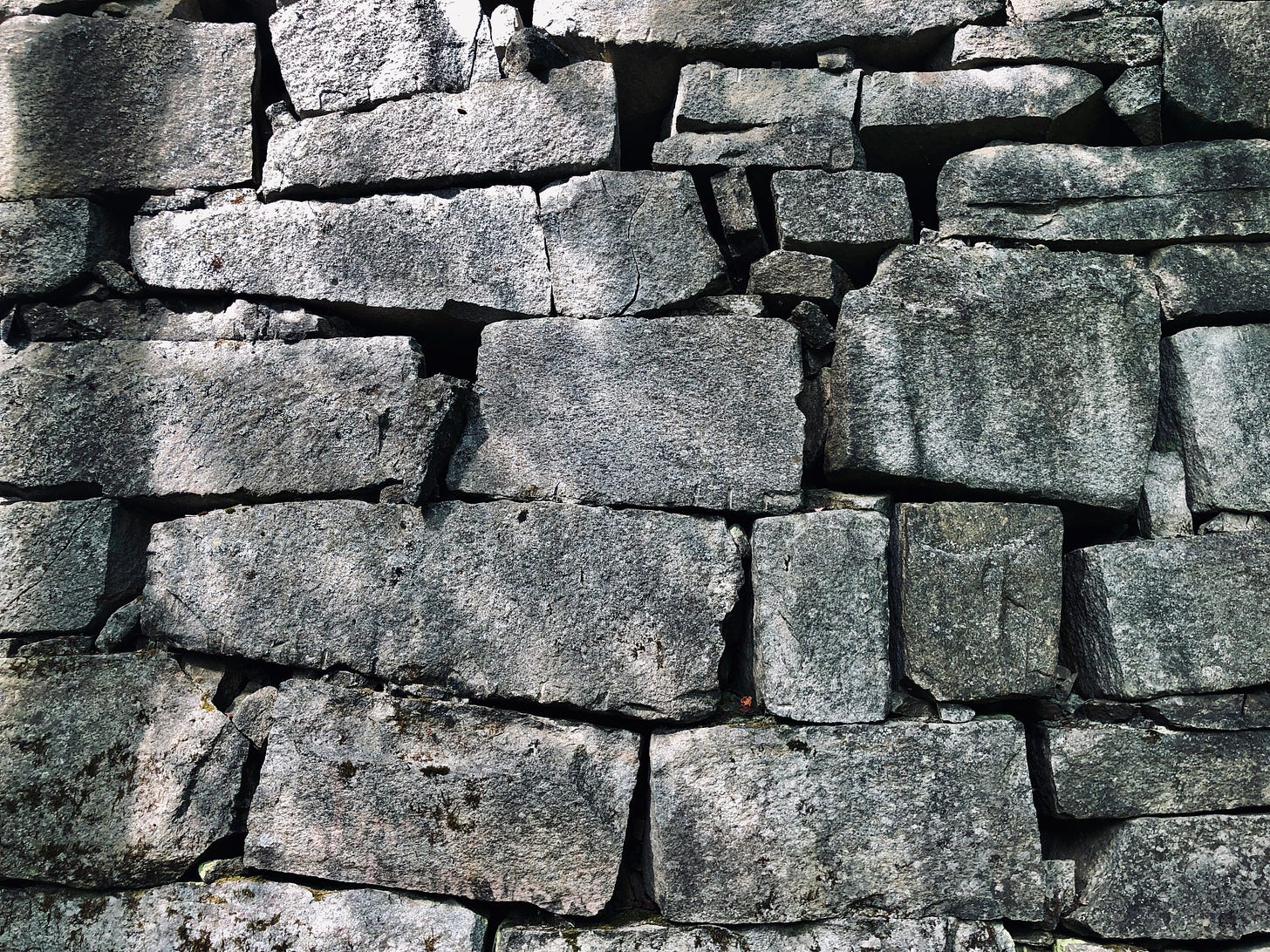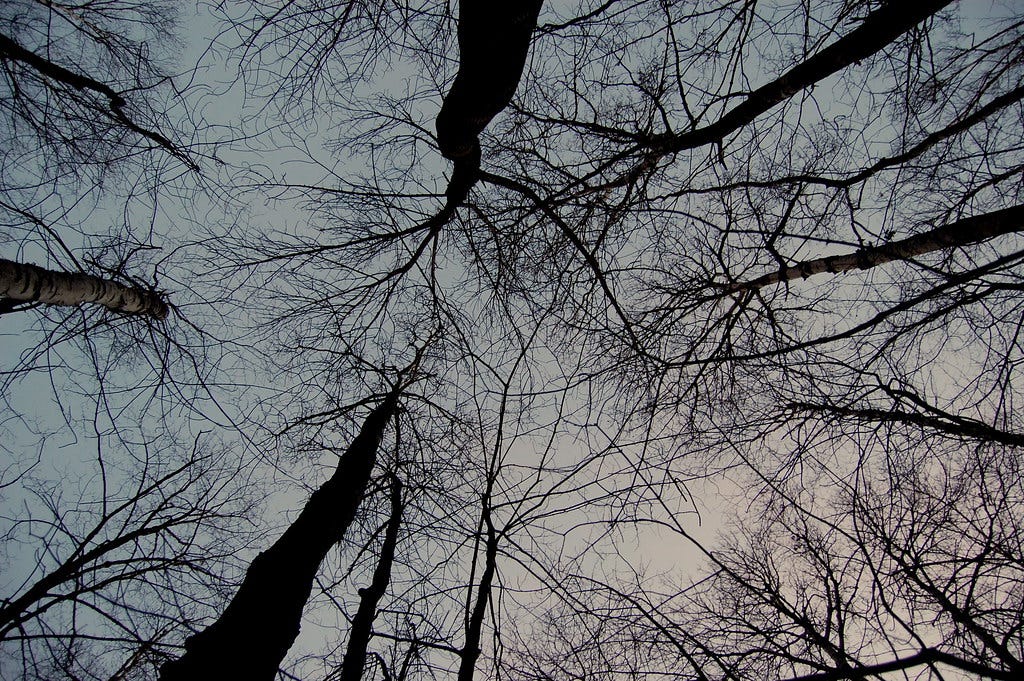Where the monsters come out

There’s a road near where I grew up where a monster is said to live. Drive a half mile up the Devil’s Washbowl Road, and it narrows into a single track that isn’t maintained come winter. As you drive into the forest, the trees tower over you, shading the path in gloom even in the middle of summer. Tall banks stretch up, ferns spilling over the sides, and you realize that you’ve entered an unwelcoming land. Drive down the hill, and you reach a cold mountain brook, surrounded by steep, unforgiving glen walls.
That’s where the Pigman was supposed to live.
Growing up, I heard the occasional story about the creature. Students at a local high school reportedly saw a creature in the woods during a party, tall, pale and naked, part man, part pig. It was seen near a local pig farm, so the local legend has been that it’s a weird, wild hybrid that arose through some unknown means. It made a couple of sightings over the years, but has largely persisted in the way that most hyper-local folklore does.
Earlier this summer, I spoke with Vermont Public Radio, which was doing a segment on local road names: the Devil’s Washbowl Road was suitably dramatic.
I’ve heard stories of the Pigman over the course of my life, although I wouldn’t say that I believe in its existence: it’s been a fun local curiosity and campfire story, and i’m sure that those kids saw anything other than a strange bear or a pig that got out of its pen. But walking along Devil’s Washbowl Road, it’s easy to see why these sorts of stories emerge from the edges of the woods, especially here in New England.
The ancient spines of the Appalachian mountains features plenty of dark, sedimentary stone that weathers away to metamorphic cores, leading to plenty of steep, gloomy hillside in the forests. Stepping beyond the edges of the fields into the woods feels a bit like stepping back in time, across the boundary from known space into unknown, wild territory.
Best case scenario, it’s just unknown. Worst case, it actually wants to eat us.
“For as long as humans have been alive we’ve had the forests or wilderness pressing up against us,” says Laura Krantz, the host of the podcast Wild Thing. The series is about “all the strange and unusual things that capture our imaginations,” and over the course of the first season, she covered Bigfoot. Her second season, which is now underway, she’s tackled UFOs. “We’ve always had to think about the fact that there’s stuff out there. Best case scenario, it’s just unknown. Worst case, it actually wants to eat us.”

When European colonists came across the Atlantic to North America, they brought their superstitions and anxieties about the world with them, and found themselves amidst a somewhat hostile environment, full of tall, dark forests and the original inhabitants who really didn’t want them there.
That translated into the stories that we told, and the roots of the American fantastic stretch back to those early days. In his introduction to his Library of America anthology American Fantastic Tales: Terror and the Uncanny from Poe to the Pulps, Peter Straub points to the beliefs of the Puritans, who believed that humans were intrinsically fallen creatures and their new home represented doom all around them.
“These grim, suspicious people lived in small communities located at the edge of the original first-growth American climax forest. In every way, this seems to me of crucial importance. What did they see in that forest, in that teeming darkness? Everything, we might say, that was not themselves, everything that threatened them most profoundly. Nature was much worse than merely a force not to be trusted; nature was, inherently, wicked in nature.”
In his book Passing Strange: True Tales of New England Haunting and Horrors, Joe Citro (Vermont’s resident expert on all things unexplained), writes that “from the moment of its birth, New England has been a weird place. Maybe weirder than Old England. Since Day One, Yankees have, with alarming regularity, experienced odd encounters — on land, sea and even in the air,” and that “we’re living on the same land where Puritan zealots marched into the wilderness — and saw devils crouching behind every tree.”
We’re living on the same land where Puritan zealots marched into the wilderness — and saw devils crouching behind every tree.
Early writers like Nathaniel Hawthorne brought that sentiment into his stories, like in ‘Young Goodman Brown’:
“He had taken a dreary road, darkened by all the gloomiest trees of the forest, which barely stood aside to let the narrow path creep through, and closed immediately behind. It was all as lonely as could be; and there is this peculiarity in such a solitude, that the traveller knows not who may be concealed by the innumerable trunks and the thick boughs overhead; so that, with lonely footsteps, he may yet be passing through an unseen multitude.”
The forests were unknown, and the new settlers faced an existential information gap about their surroundings. Their outlook on the world didn’t allow them to explore beyond their own fears. When the human mind encounters a blank space, it tends to make up something about it. Krantz notes that “this is how you have to figure stuff out — you have to have a placeholder there until you can get the kind of information that will let you change your perceptions.” Stories are one of those placeholders, and at its deepest roots, our fantastical stories are the placeholders of a fearful people trying to cope with their unknown surroundings.

The myth of the Pigman didn’t originate from the earliest settlements of Vermont, but in the 1970s, amidst the slow-broiling conflict known as the Cold War. Along with it came a flood of other creatures: UFO sightings, Bigfoot, Mothman, and other unexplained phenomena that sprang up across the United States.
That wave of unexplained events and sightings came at a point of intense social anxiety as the US and Soviet Union squared off against one another in the aftermath of the Cold War. When the USSR launched Sputnik 1 in October 1957, it did so less with the intent of scientific endeavor and more as a technical demonstration: if we can put up a small radio into space, imagine what we can do with a nuclear warhead.
The result was a steady increase in tensions as the two nations added more bombs to their arsenals, promising to rain death on the other if the right set (or accidental) circumstances occurred. People built fallout shelters in their back yard, while students at school took part in drills in which they hid under their desks.
But in the technological race throughout the 20th century, advances in science and technology continued to push against the metaphorical woods that surrounded us, shedding new light on the nature of the cosmos, and not only giving us a better understanding of our place in the universe, but showing how tiny we are in the grand scheme of things. And as our knowledge grew — grows — we better understand that there’s still more that we don’t understand about the universe, and the planet we live on. “When you get to the point where you can’t grasp what you’re seeing or experiencing,” Krantz notes, “there’s this default to [a sort of ] mythology where you can more easily wrap your head around them.”
In many ways, the Cold War was an abstract conflict for most Americans — one without concrete (mostly) battlegrounds, waged with powerful technologies. That sense of the unknown — now couched in technological terms — manifested itself in a range of new stories as people worked to find a way to comprehend what was happening: resulting in our popular obsession with UFOs in the skies above the country to the strange cryptids that haunted the forested in our backyards.

The monsters that we see hiding behind the trees and bushes arrive at the boundaries between the known and unknown. The edge of a forest, over a stone wall, or in the depths of the fog drifting off shore. That hazy line between what we think of as civilization or tamed land, coupled with the anxiety and fright that wells up inside of us at the prospect of the unknown invites those visitors from the planes of our imaginations into the real world. Our brains play tricks with our eyes when we catch sight of the shadowy gloom of the forests. It presents itself with half-remembered stories about the people we know nothing about, turning strangers into objects of fear.
We live in anxious times, and we’ve seen the rise of these abstract threats around the country, supercharged with the power of social networks and rumors. Bands ANTIFA terrorists roam burning cities, looking for their next victims, while legions of immigrants charge the borders in an attempt to destroy the American Way of Life.
In the meantime, the Pigman supposedly still lives in the hills of central Vermont, resting in our collective imaginations until the next time we step from the field and into the woods.
But they’re stories, bred by fear and drama by people unwilling to understand their surroundings. In many ways, we’re still the same interlopers, trying desperately to find a way to cope with the dark forest that surrounds us.
As always, thank you for reading. I hope that you’re coping with everything in this last week before the election. If you have a strange story of supernatural creatures or something unknown from your neck of the woods, I’d love to hear about it.
Coming up — I’ve got a post about radicalization that I’m finishing up (tomorrow), as well as a trio of horror book reviews (just in time for Halloween), as well as the regular monthly SF/F book list (Monday).
Andrew